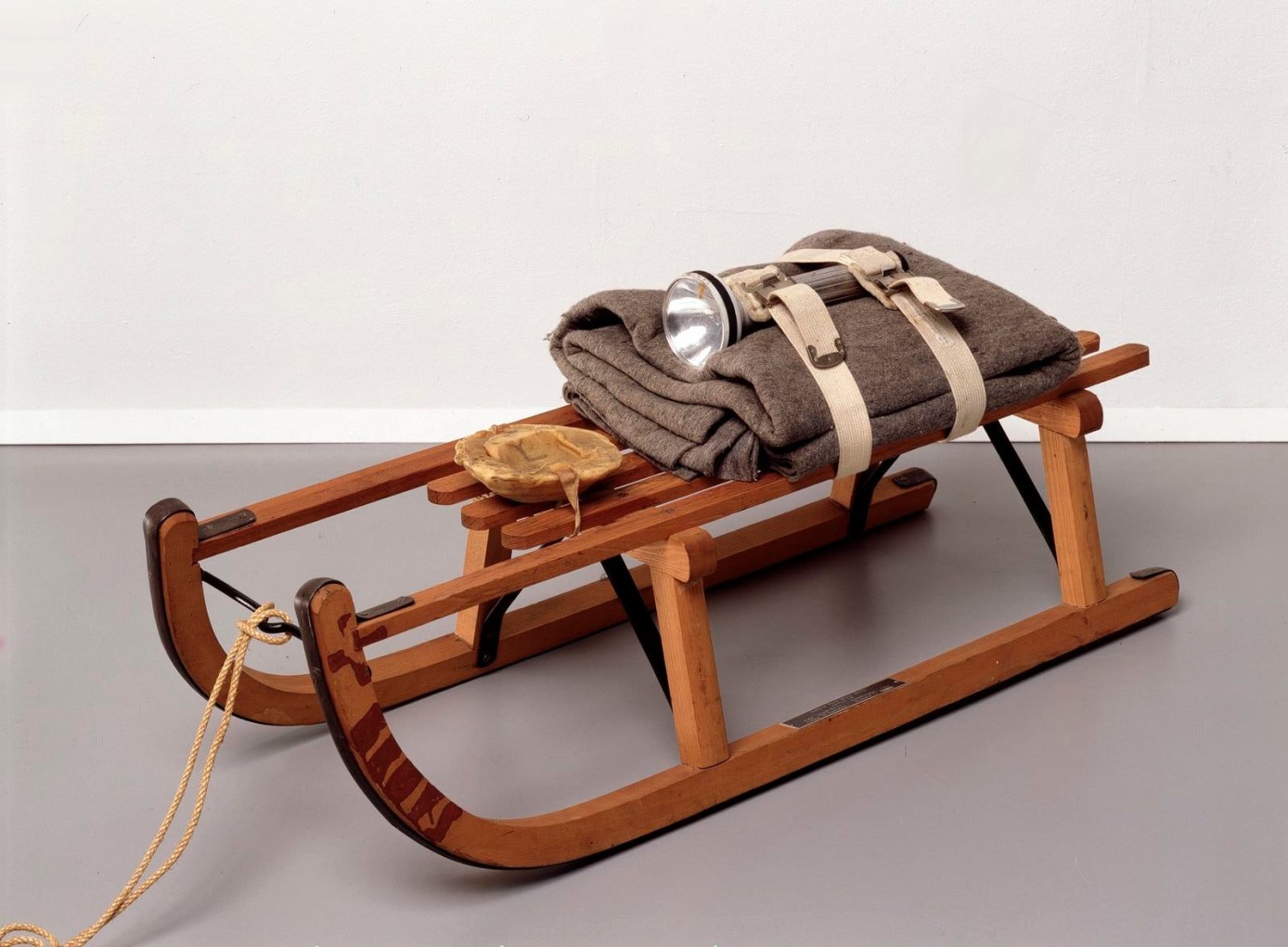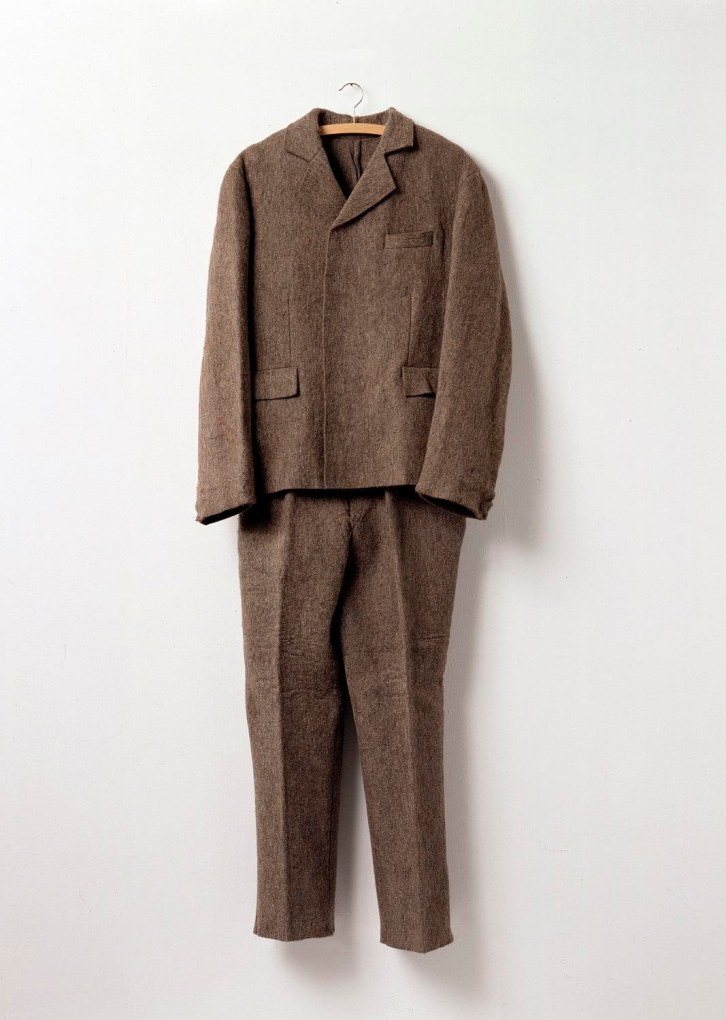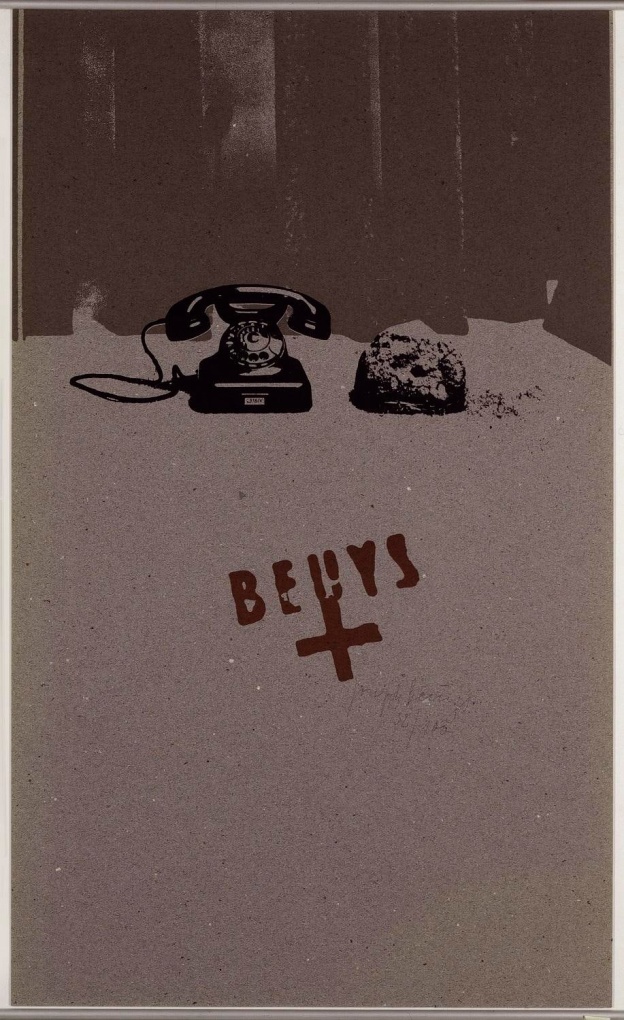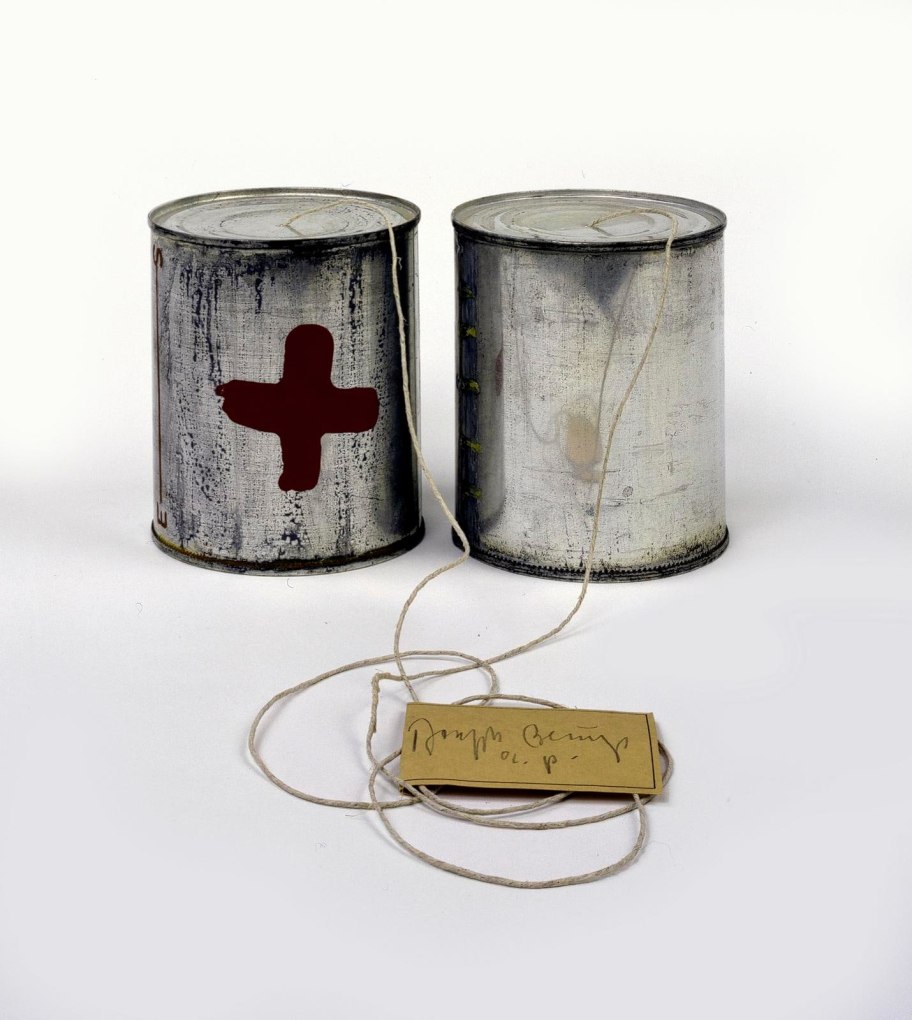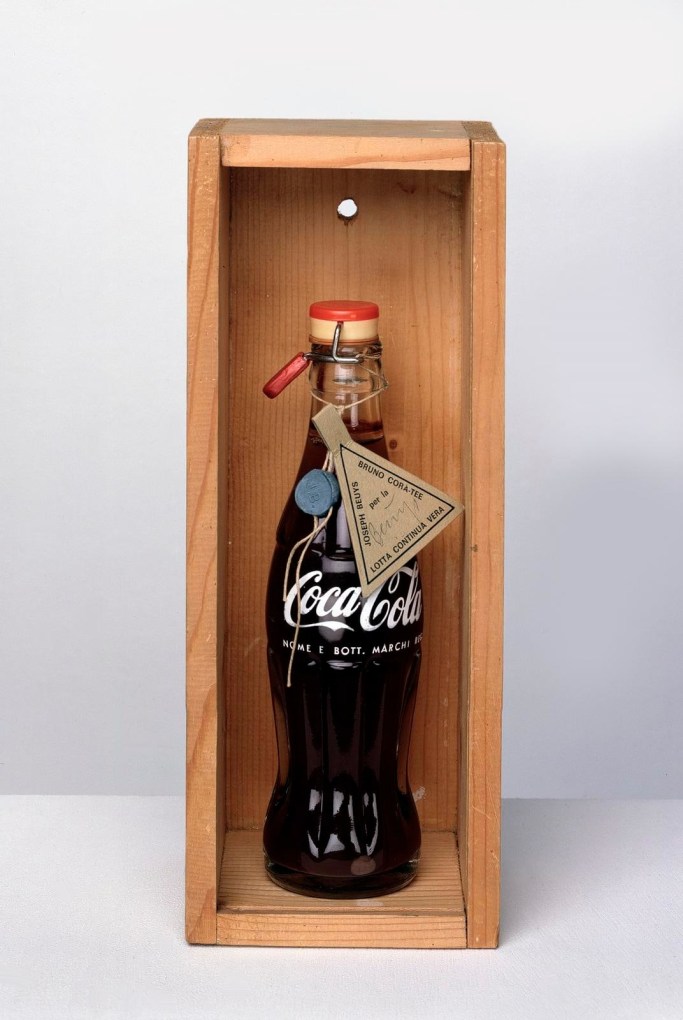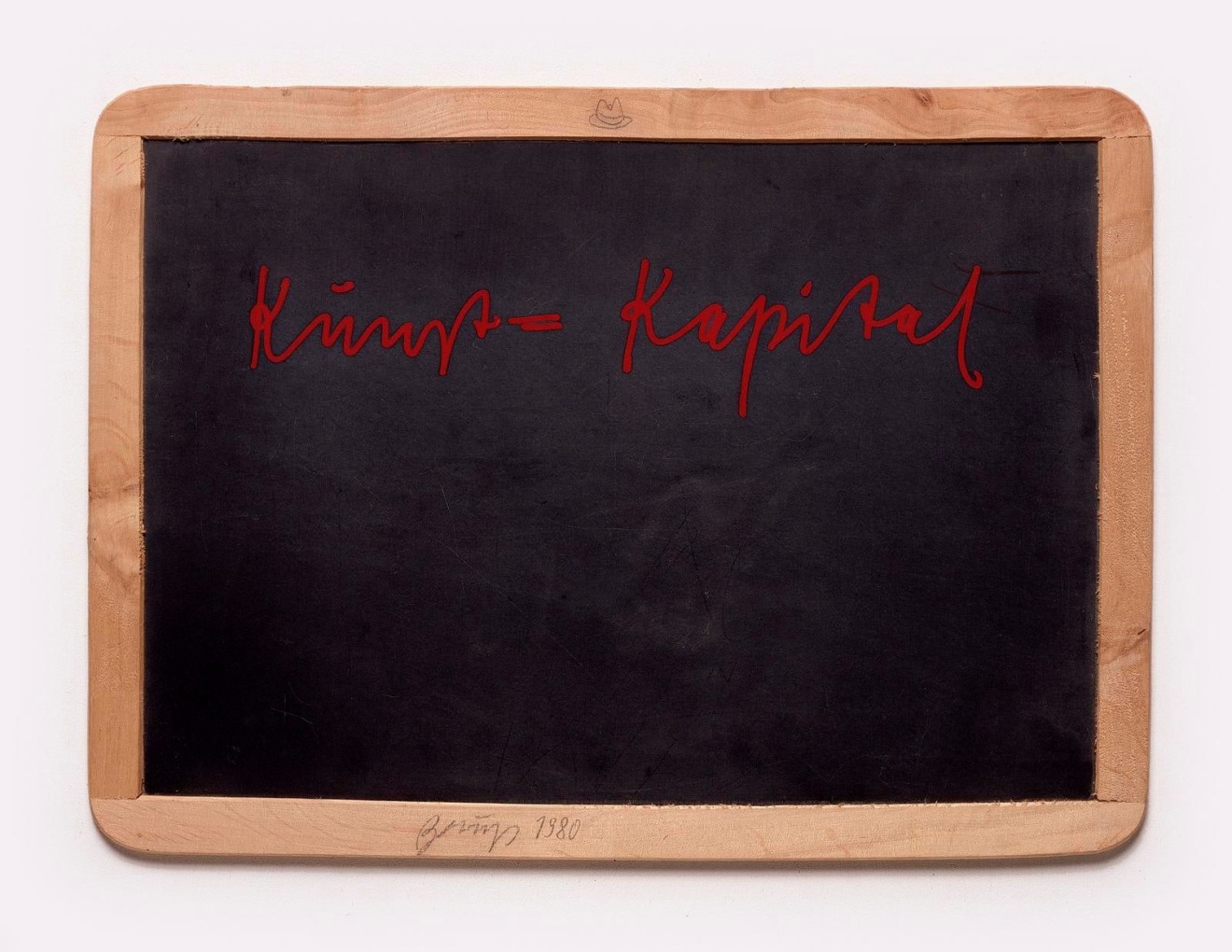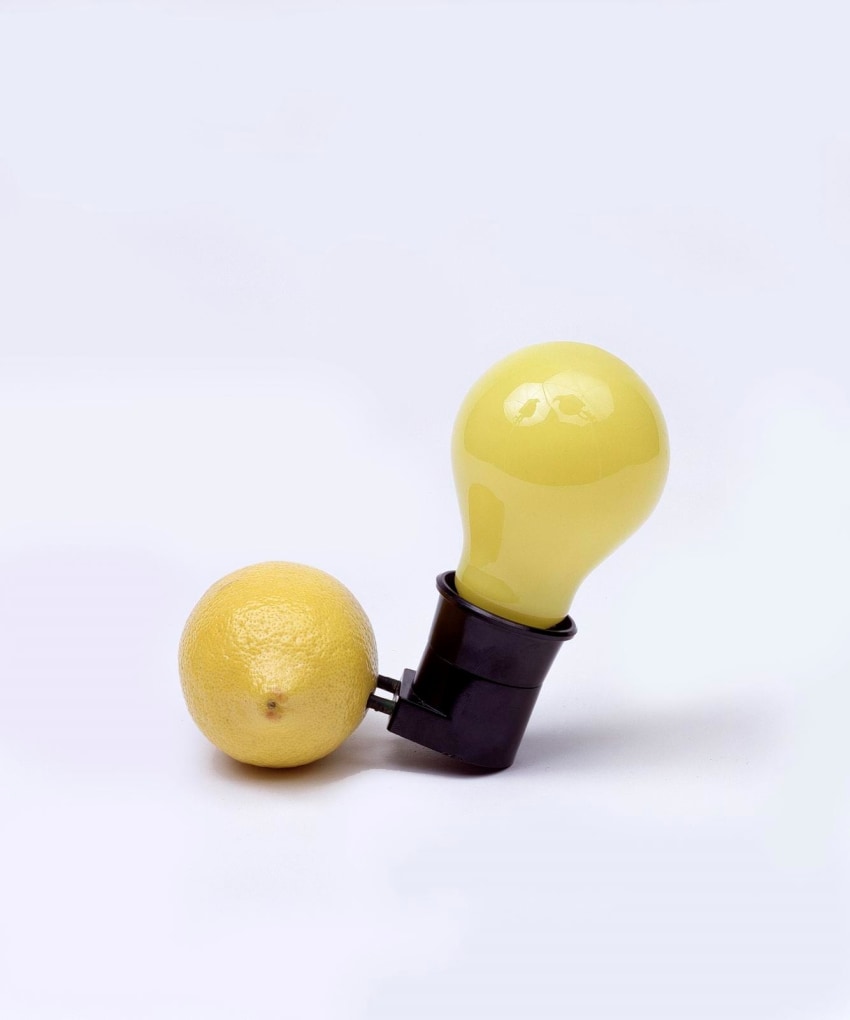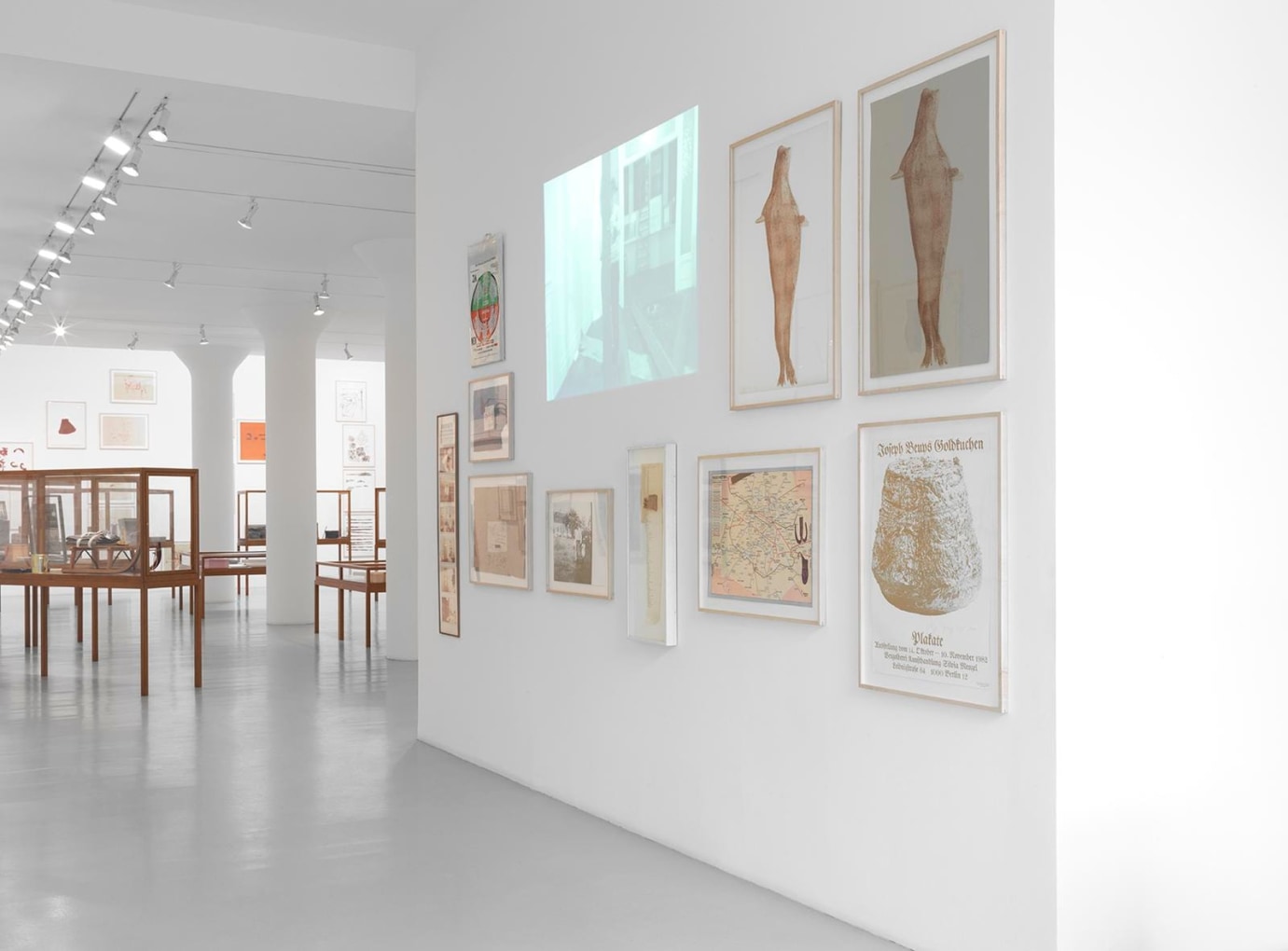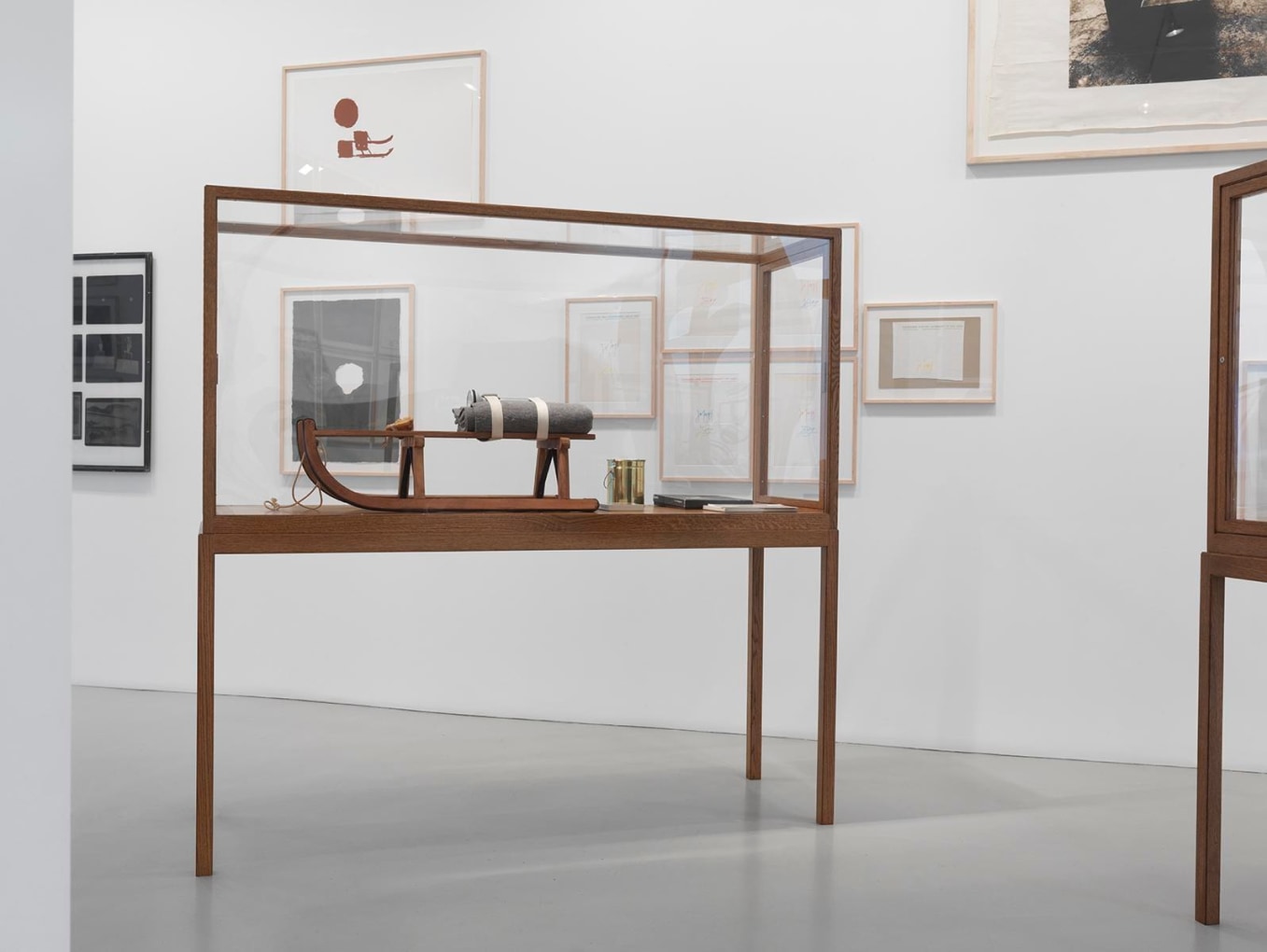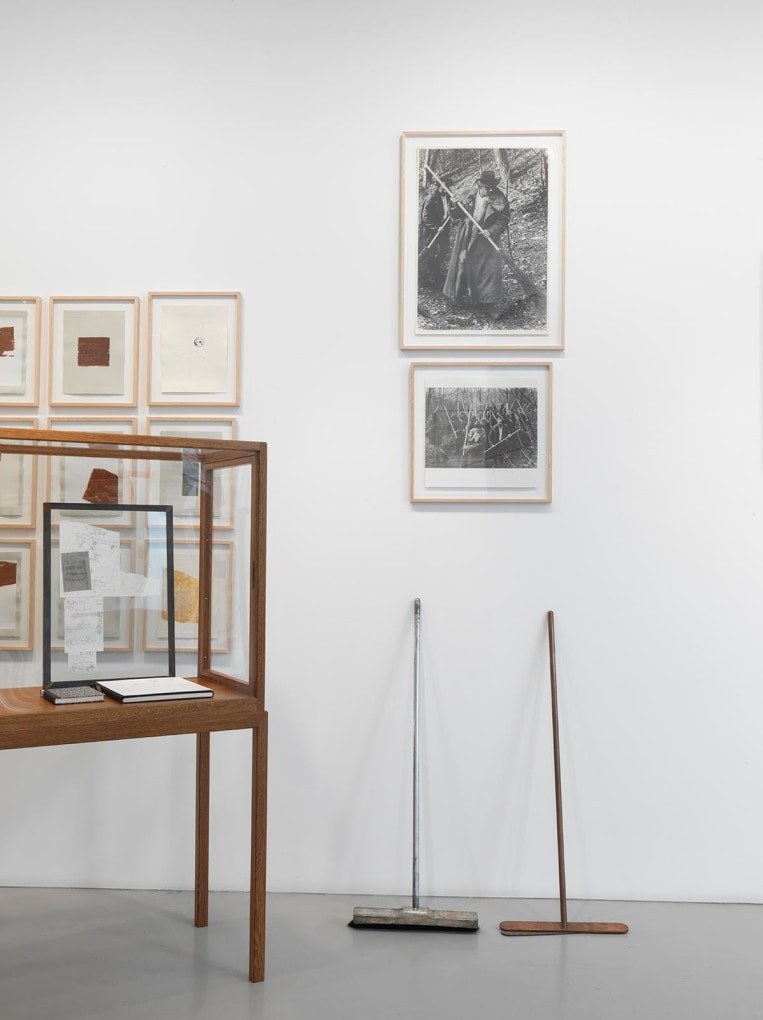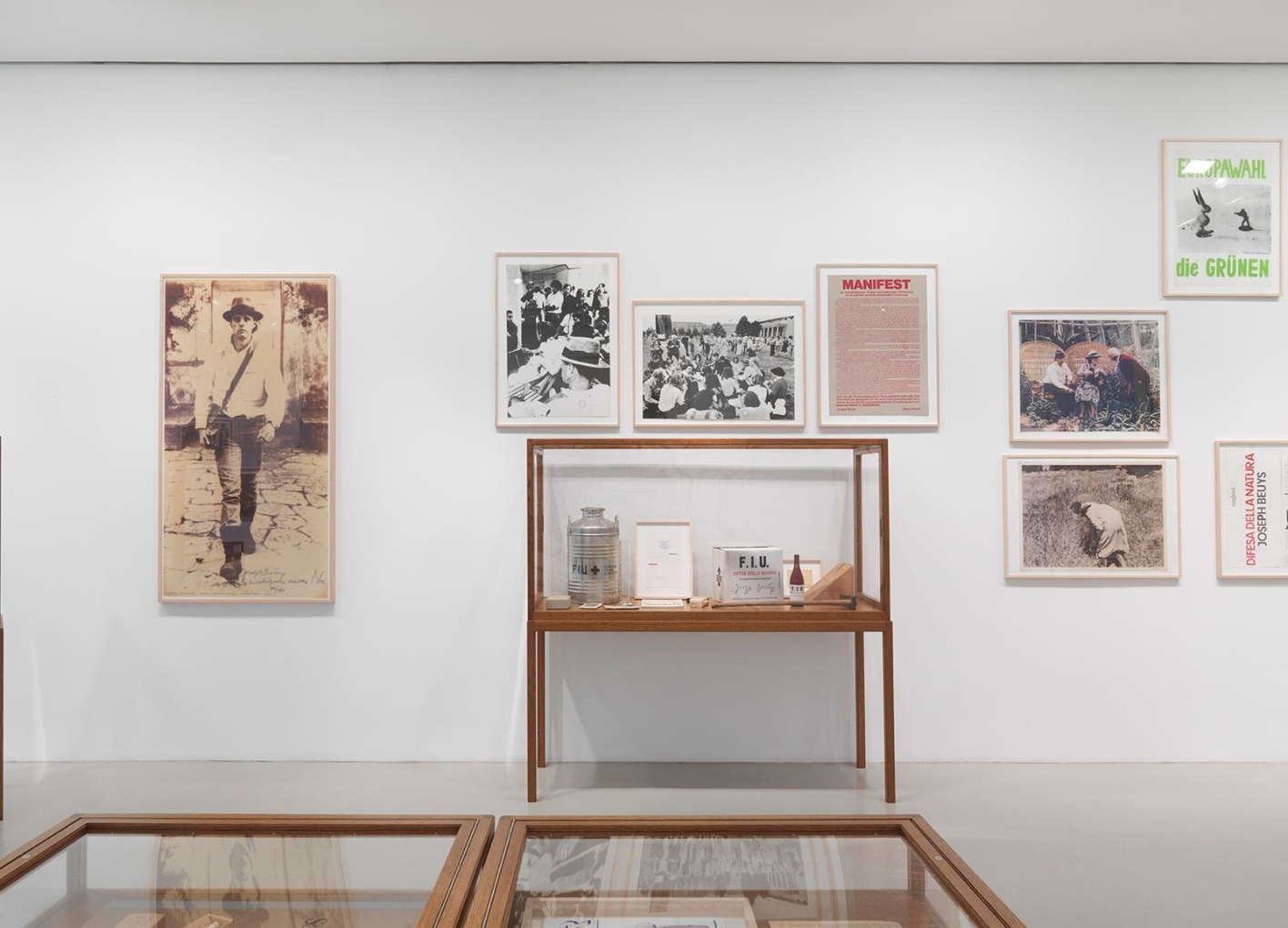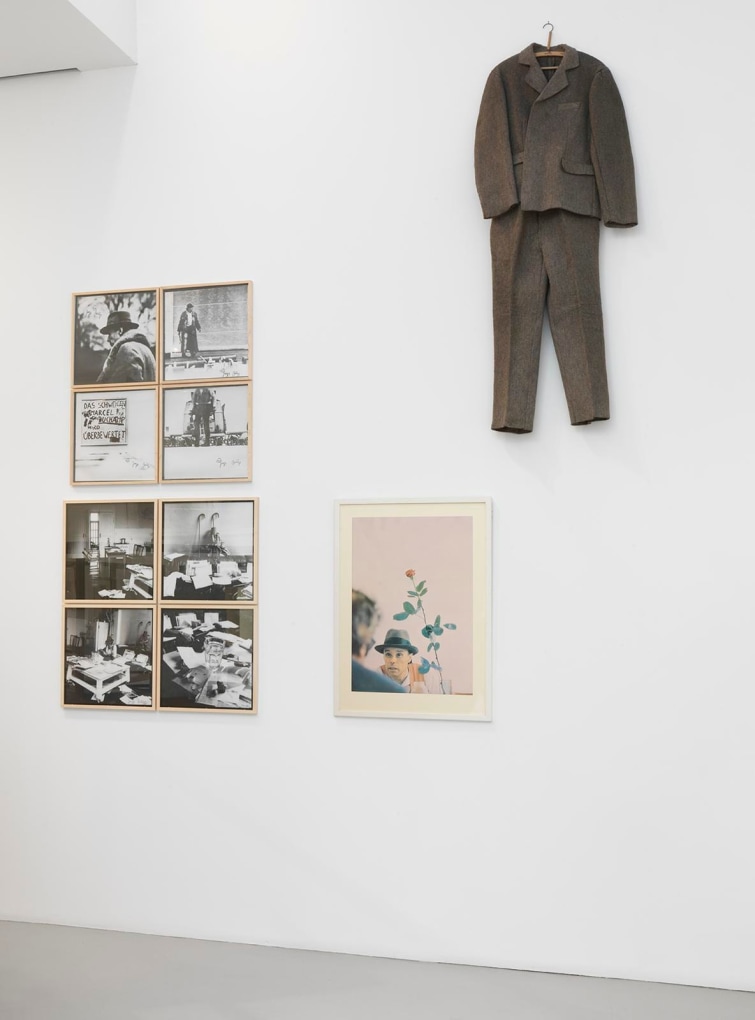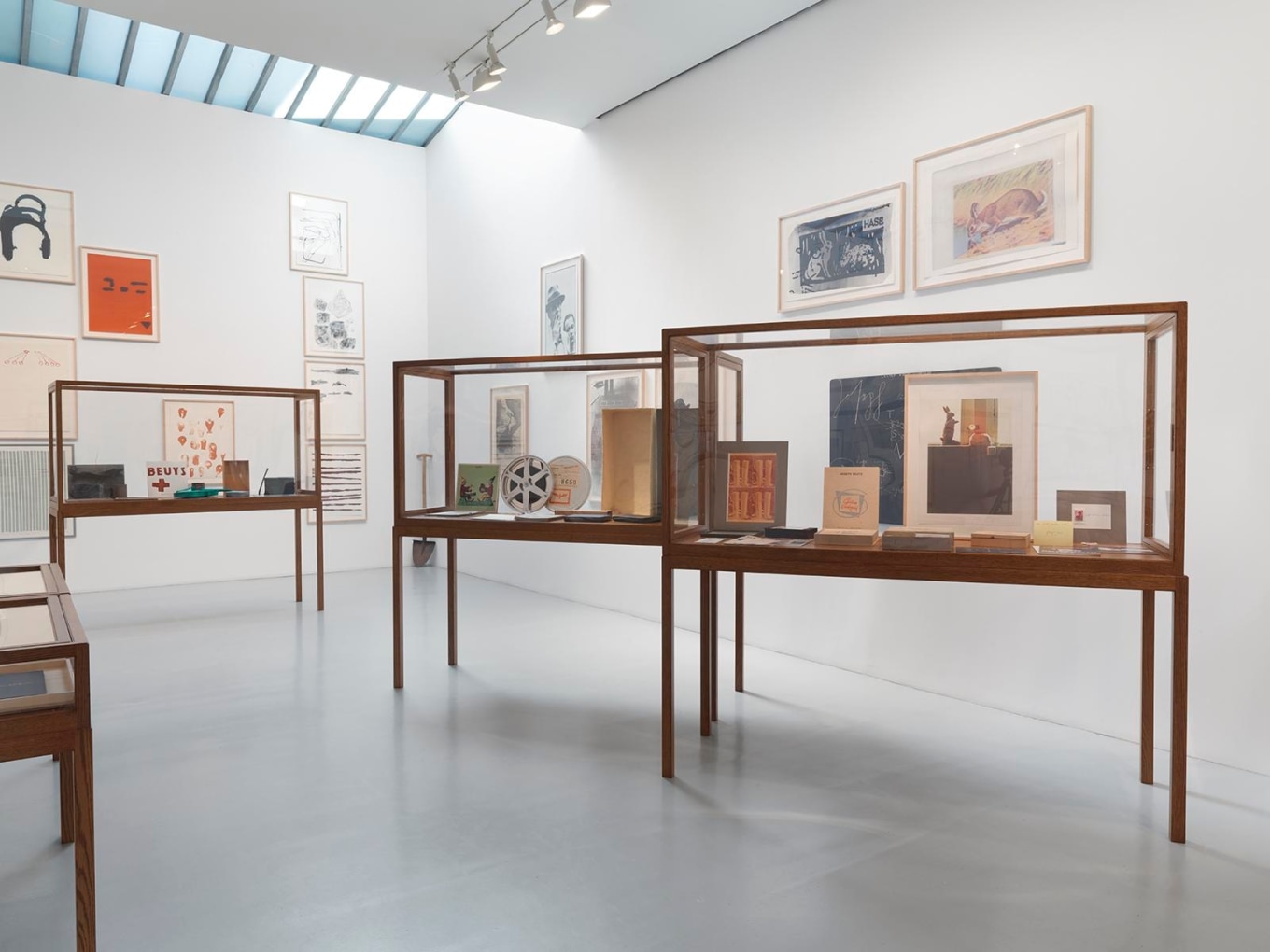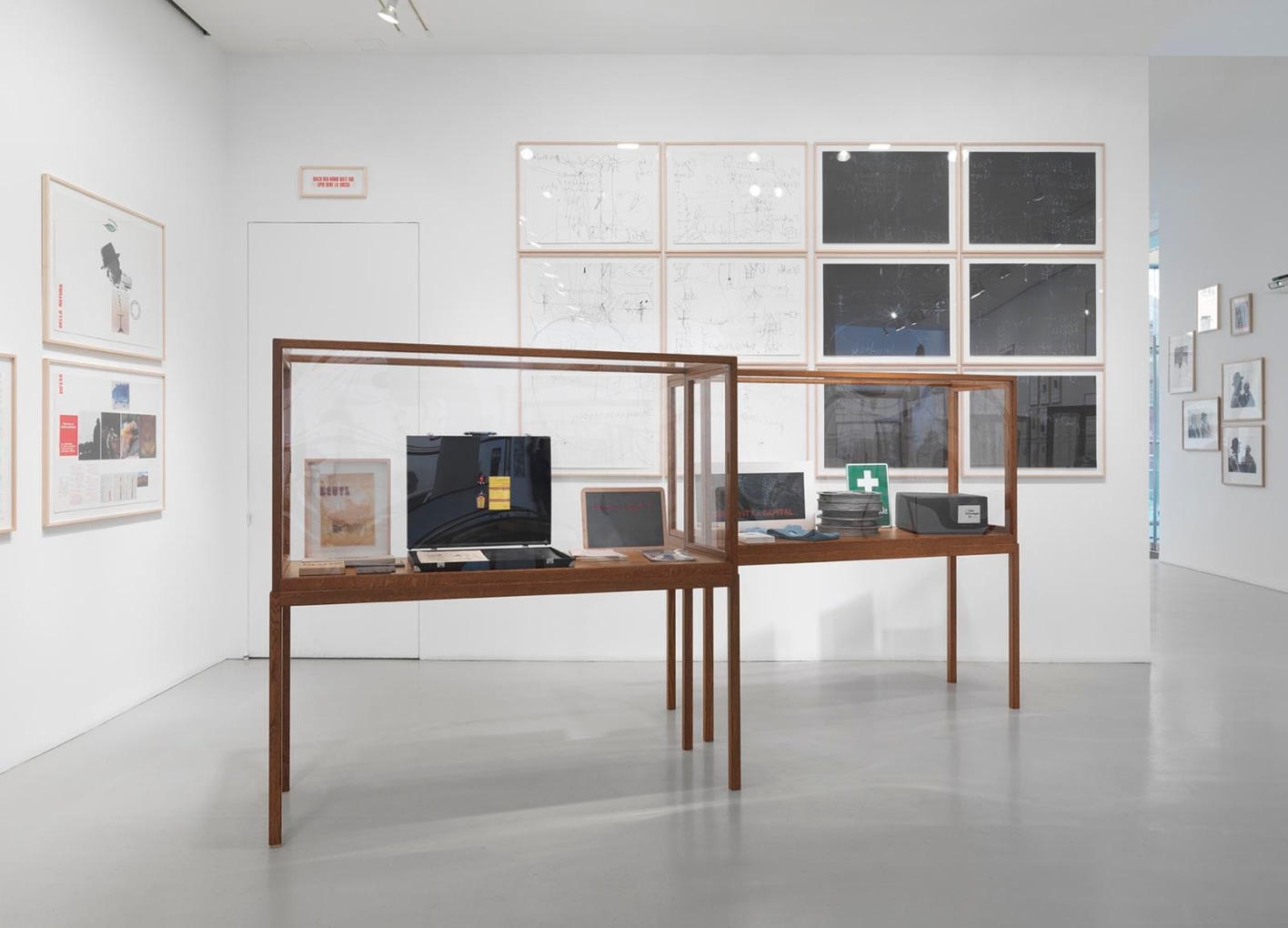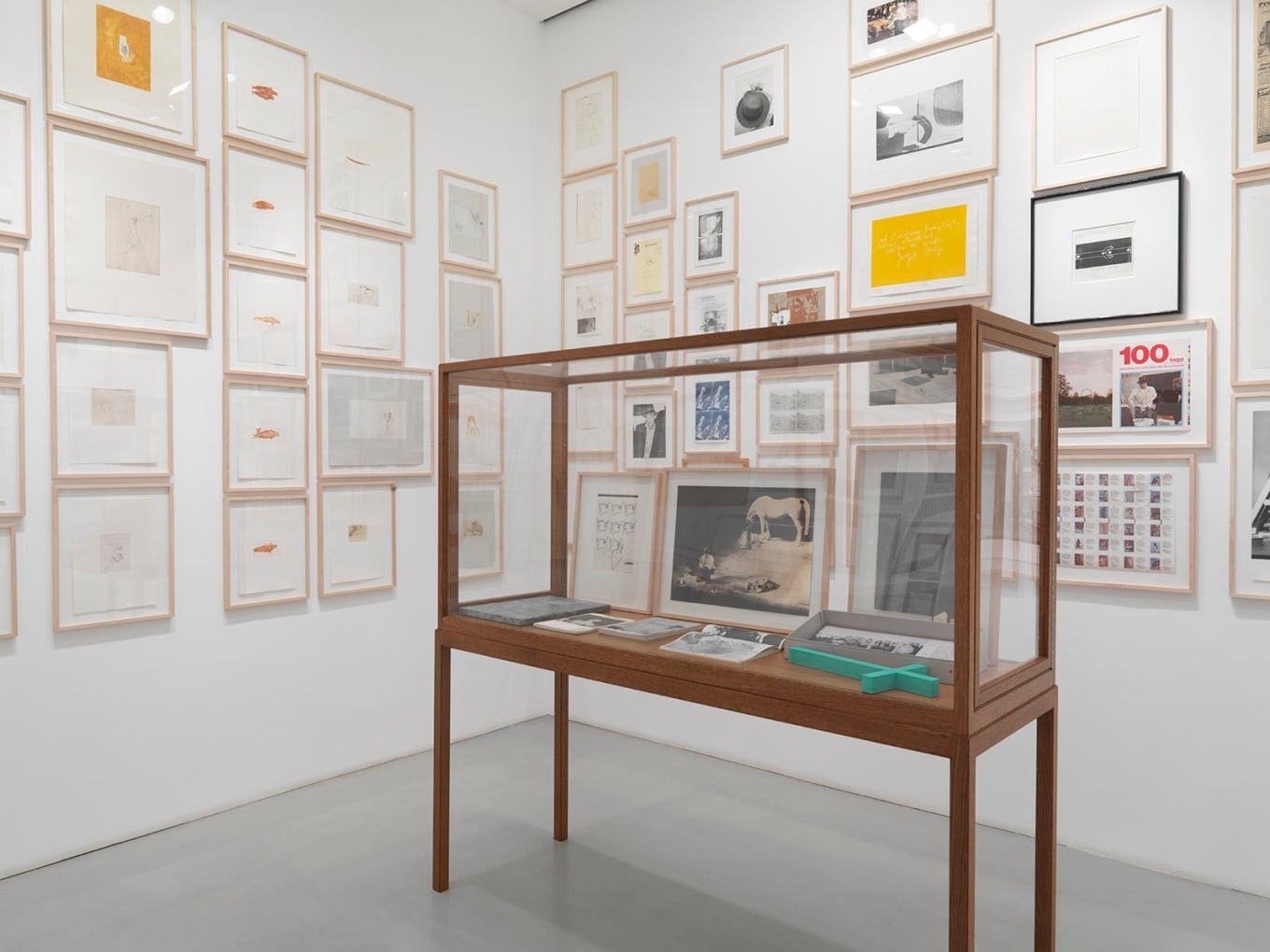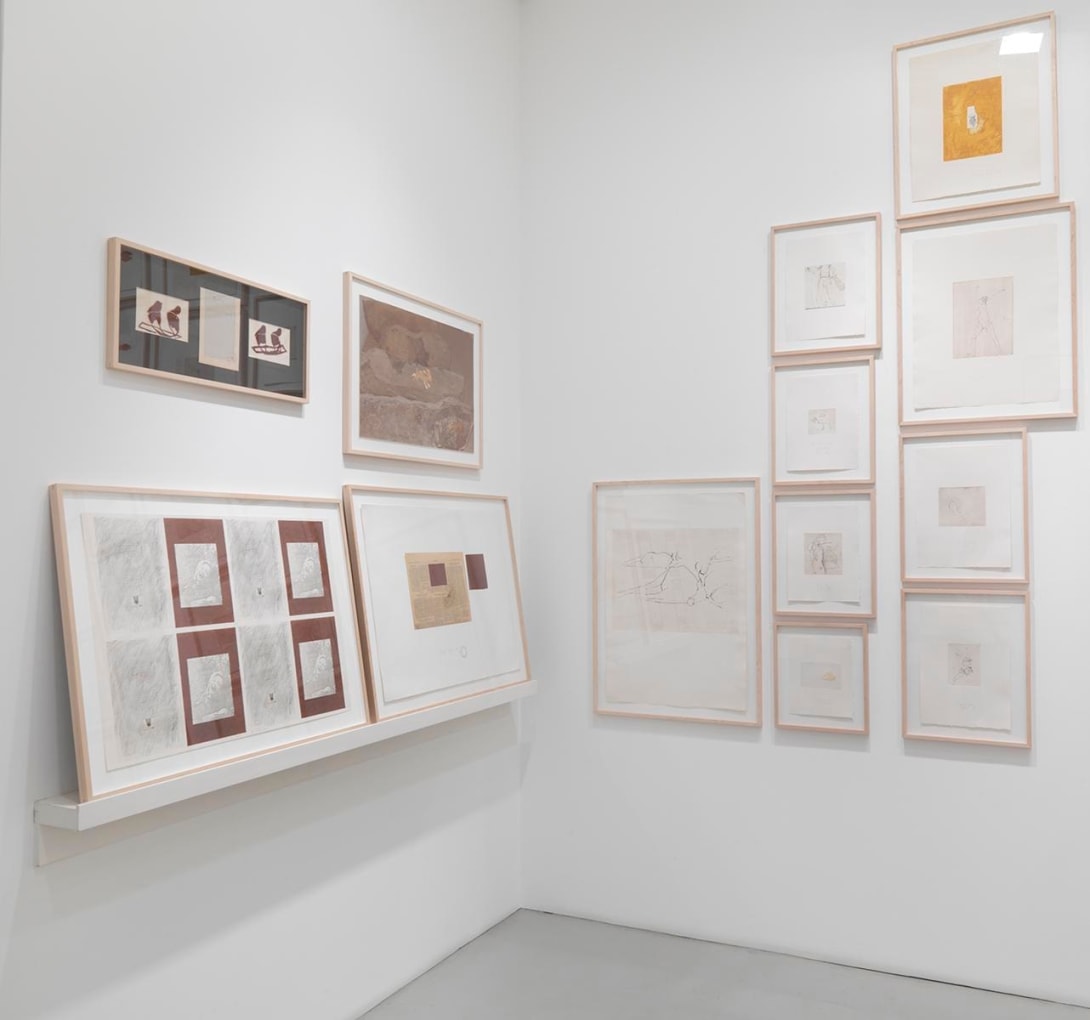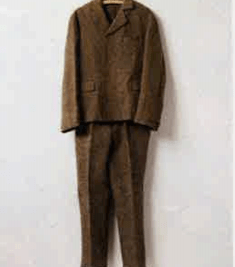Mitchell-Innes & Nash is delighted to announce a large-scale exhibition of Joseph Beuys multiples from the collection of Reinhard Schlegel. Consisting of over 500 works spanning from the early 1960s to his death in 1986, this exhibition is the most significant collection of Beuys multiples to be shown in New York to date. Iconic pieces such as Sled (1969), Felt Suit (1970), The Silence (1973), Art=Capital (1980) and Capri Battery (1985) will be on view starting March 13, 2015.
The multiples carry a special significance in Beuys’s oeuvre; he once said: “If you have all my multiples, then you have me completely.” Connected to his ambition to affect social change through art, the multiples allowed Beuys an avenue to disseminate his ideas at greater range. Each multiple in the collection encapsulates a specific moment, performance or idea in Beuys’s practice, and are laden with symbolic meaning. Capri Battery, for instance, is one of the last multiples Beuys created and connects a natural object (the lemon) with a pinnacle of human innovation (the light bulb), signifying ecological balance between man and nature.
Beuys’s work is heavily influenced by his controversial personal history. During World War II, Beuys volunteered for the German Air Force. By his own account, Beuys’ plane was shot down on the Crimean Front in 1944. He recalls being rescued by nomadic Tatar tribesman who wrapped him in animal fat and felt and nursed him back to health. Though the factual accuracy of this story has been called into question, the account of his near-death experience in Crimea serves as a powerful creation myth in Beuys’s artistic identity. Felt and fat are among Beuys’s most often used sculptural materials and serve as metaphors for the potential for change and the release of creative energy.
Joseph Beuys (1921-1986) was one of the most influential German artists of post-war Europe. He was a sculptor, performance artist, printmaker, political activist, and teacher, who challenged the idea of traditional forms of art. Beuys was an important contributor to the Fluxus movement, the influential, ongoing avant-garde group that includes Yoko Ono, John Cage, Nam June Paik, among others. Artists associated with Fluxus share an anti-market sentiment in their art-making and, like Beuys, champion the possibilities of artistic creation to enact positive social and political change. Famous for his often-quoted saying, “everyone is an artist,” Beuys sought to activate the intellectual and creative capacity in all human beings, culminating in his notion of “social sculpture,” in which the power of art is activated to transform society.
Beuys’s revolutionary performances pushed the boundaries of what can be considered art, while also engaging with symbolism. In his 1965 performance How to Explain Pictures to a Dead Hare, Beuys locked himself in the gallery, allowing viewers to watch only through the glass window. He covered himself in honey and gold leaf and cradled a dead hare, whispering into its ear. Juxtaposing man and nature, honey from bees symbolizes community, warmth and brotherhood, while the rational activity of ‘explaining pictures’ to an animal, highlights both the power and limitations of human intelligence and creative power.
Complete or near-complete sets of Beuys’s multiples are very rare. In the United States, the largest collections are in the Walker Art Museum in Minneapolis, Minnesota; the Harvard University Art Museums in Cambridge, Massachusetts, and the Broad Art Foundation in Los Angeles, California. The exhibition of Beuys’s multiples presented by Mitchell-Innes & Nash is the most extensive collection of multiples to be shown in New York to date and is available for sale as a complete set.
The exhibition will be curated and installed by Professor Dr. Eugen Blume, Head of the Hamburger Banhof in Berlin, Germany. Eugen Blume is the leading Beuys scholar and curated the highly successful Beuys: We are the Revolution show at the Hamburger Bahnhof in 2008-2009. In addition to his museum work he is a professor at the Bremen High School for Arts and Design, Germany.
The exhibition will be accompanied by an illustrated publication with an essay by Eugen Blume.


